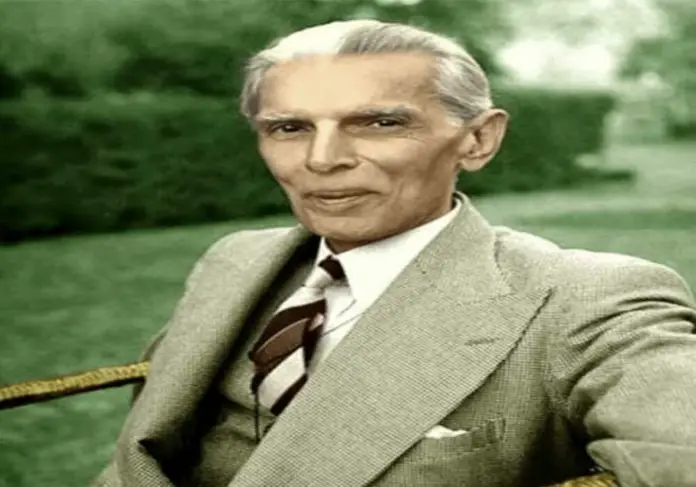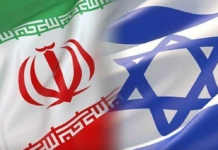By Dr Aamir Butt
‘Consciously or unconsciously everyone writes as a partisan. Beware of my partisanship, my mistakes of facts and distortion inevitably caused by my seeing only one corner of events.’
(George Orwell)
The events of India’s independence and partition in 1947 continue to be a material for debate and controversy. New books are regularly published on the subject or on the various personalities involved in the drama. As is the case, every writer has their own personal bias which influences their analysis even if they try their best to remain impartial and truthful.
Some of the analysts present a picture of MA Jinnah which tends to cast him in a rather unfavourable light, here I am not claiming that Jinnah was perfect or that he did not make any mistakes but only that when commenting on something he may not have done as well as it was possible the full context is ignored to present only one side. Here are some of such issues which I would like to elaborate on so that people have a fuller picture of what went on. In the end, everyone can judge using their own conscious.
Lucknow pact
The 1916 Lucknow pact marked the height of Hindu-Muslim collaboration in British India. It’s signing was also the finest hour for MA Jinnah who was now being called the best ambassador of Hindu-Muslim unity, a title made famous by the glamorous poetess-politician Sarojini Naidu but was first used by Jinnah’s mentor and friend Gopal Krishna Gokhale who had unfortunately died in 1915 at the age of only 49, had he lived 20-25 more years the history of India might well have been different.
Some political analysts try to present that in agreeing to sign the Lucknow Pact Congress leaders were very benevolent towards the Muslims, this is not true.
What Congress conceded was:
- Muslims will have separate electorate.
- In the proposed Central Legislative the 23% Muslims of India will have 33% seats.
- In the Muslim minority provinces the Muslims will have seats more than proportionate to their population in that province.
Now, all of these concessions were rather useless to Muslims because:
- The separate electorate was given as an award by the British and it would have made no difference if Congress agreed with it or not.
- The proposed Central legislature was never given much power by the British.
- Even if it had been the 33% Muslim seats would not have been enough to prevent any legislature to be passed as 67% is more than twice 33%.
And mind you Congress had not given the above so-called concessions for free but had driven a hard bargain.
Neither at the centre nor in the province was the Muslim minority elevated to parity but in the two most important provinces, both of which had a Muslim majority, it was reduced in such a way that it became parity in one (Punjab) and minority in the other (Bengal)!
And while there certainly are advantages for a minority to be at par with the majority or even better be made into a majority there is hardly any advantage to be given 20% seats when your population is 10% for 10 or 20% are both significant minority.
Furthermore, the safeguard put in that no bill relating to a community will pass if 3/4 of that community oppose it would have worked the same regardless of the number of seats proportionate to the population, in other words if Muslim seats were 10% (proportionate to population) then 3/4 of this 10% would have blocked a bill as effectively as 3/4 of 20% seats with weightage.
The fact remains that Lucknow Pact was a significant agreement in which Congress gained more due to the generosity of Jinnah who trusted them and believed this will lead to harmony between the two communities. The Congress leaders repaid him by going behind his back to join hands with the lunatic jihadis of Khilafat Movement and heckling him off the dais when he tried to talk sense at the session.
Junagadh, Kashmir and Kalat
Another topic is how Jinnah dealt with the issue of the princely states. Here, his acceptance of the accession of Junagadh to Pakistan and rejection of the accession of Kashmir to India and the annexation of Kalat is presented as isolated events specific to him and creating a unfavourable picture. Let us look at the full picture.
At the time of India’s independence and partition all stake holders agreed and signed on the plan regarding how this will take place.
The plan was to apply only to the parts of India under direct British rule.
With regards to 500 or so princely states it was agreed by all parties including Nehru and Jinnah that they will have the option to join India or Pakistan or become independent. The decision which way they will go was to be taken by the rulers of the states.
These provisions in the partition plan could only be adhered to if both sides who had signed it complied with them.
After India refused to accept the accession of Junagadh to Pakistan there was no reason for Pakistan to respect the provision that it will be the ruler of the state who will decide. This happened before the Raja of Kashmir had made any decision regarding the future of Kashmir.
Geographically and historically the State of Kashmir was more connected to what was to be Pakistan than to India, all the communication network and road etc. were such arranged and Kashmir, or at least the areas with Muslim majority should have joined Pakistan. And so once the agreement regarding the states was torn up by India in Junagadh Jinnah had to the right to do the same with Kashmir.
In the same way there was no reason for Pakistan to accept the Declaration of Independence by Kalat, which in any case was a even more ludicrous idea than Junagadh acceding to Pakistan. The argument that Jinnah had promised Kalat independence has little evidence to support it and nor are any such offers valid eternally but can alter with time and events.
The fact is after India’s annexation of Junagadh the partition plan was effectively dead and it was everyone grabs what they can by hook or crook.
Dismissal of Dr Khan Sahib ministry
Another issue often mentioned, though not an event at partition but closely related is the dismissal of the Khan Sahib ministry in the NWFP province.
Representative governance was introduced in India through the 1919 reforms and 1935 Government of India act. Through these reforms elected provincial legislatures were created in the 11 provinces of India.
The NWFP legislature was to have 50 seats. Interestingly, like in other provinces weightage was used to decide how many of these seats will be for Muslims and non-Muslims. The population of the province was 93% Muslim however the house was to have 38 Muslim and 12 Hindu/Sikh seats giving the non-Muslims a 24% quota. It is interesting to mention here that later on Jinnah’s demand for Muslims to have a 33% quota in the central legislature of India post-Independence relative to their population of 23% was rejected by Congress as being unreasonable yet they had no problems accepting the earlier disproportional allocation of seats in the provincial legislatures when it suited them.
Also, worth mentioning that the British had not introduced local representative government at the centre and the 1935 act had a section 93 through which the Governor General could dismiss the elected legislature of any province and impose direct rule through his appointed Governor. Congress which won the election in 8 of the provinces vehemently protested against the existence of article 93 almost to the extent of refusing to form the provincial governments.
Prior to the 1937 elections, the first under the new reforms, the KK party merged with the Congress and became the provincial Congress party of NWFP. This party won a landslide victory in the elections and a government headed by Dr Khan Sahib as the Chief Minister was installed.
By the time of the next elections in 1946 the political landscape had changed. The Muslim League (ML) headed by MA Jinnah had massively increased its popularity on the basis of its demand for Pakistan. Of the 290,000 votes cast in the elections the ML candidates received 145,510 votes while the Congress candidates received 143,511 votes. However the Congress had won 2 more seats than ML and was asked to form the new government.
On 3rd June 1947 it was announced that at the time of independence on 15th of August 1947 India will be divided into 2 Dominions of Pakistan and Hindustan. For the people of NWFP it was proposed that they will through a referendum decide if they want their province to join Pakistan or Hindustan. This plan was accepted by ML and Indian National Congress, and so in a way the Congress leaders ditched their brothers in the NWFP congress who wanted to keep India as one and opposed the idea of Pakistan.
The KK/NWFP Congress then demanded that a third option should be added to the referendum, which was an independent NWFP called Pakhtunistan/Pathanistan. While the support for this in the central committee of the INC was lukewarm the prospect was discussed with the Governor General by the INC president who was reminded that it was Nehru and INC who had earlier completely rejected the idea of any provincial independence so how could they now demand the same?
Another interesting fact is that Mahatama Gandhi who had rejected the idea of an independent United Bengal now became the most passionate supporter of and independent Pathanistan!
Unable to change the terms of the referendum the KK/NWFP Congress announced they will boycott it. However the British rulers decided that the referendum will still go ahead since it had been agreed to by all parties including INC. The KK/NWFP Congress then launched a movement against the Provincial Governor accusing him of leaning towards ML (when the facts pointed in the other direction), and so the Governor was changed and Robert Lockhart was appointed that made the provincial government happy. All the arrangements for the referendum were made with the approval of Dr Khan Sahib the CM.
In the run up to the referendum the KK/NWFP Congress kept urging the people of the province to boycott the referendum. And curiously the central committee of the Congress who had agreed to the referendum took no action against their provincial chapter!
The referendum was to take place between July 6-17. On 7th July the KK announced to celebrate Pakhtunistan day. In the rally held for this Dr Khan Sahib announced that if the votes cast for Pakistan was more than 31% of those eligible to vote he will resign.
In the referendum the votes cast for joining Pakistan were 289,244, this represented 51% of the eligible voters of the province and so as per his own words Dr Khan Sahib should have resigned. However, alleging that the elections were rigged he went back on his words (remember how David Cameron government that had campaigned for remain resigned when the leave won the Brexit referendum despite having a majority in the house).
Dr Khan Sahib was reminded that the conditions for the referendum were the same as the 1946 elections which he agreed and therefore conceded that rigging had not altered the results in the referendum.
Still, he refused to resign!
As the clock was now ticking fast towards 15thAugust it was clear that unless the NWFP government is changed Pakistan will have one of its provinces under a Congress government at independence. As Dr Sahib was adamant to stay in power the ML requested the Governor General to use his power under article 93 to remove the provincial government and impose direct rule through the provincial governor. Mountbatten knowing the demand was logical did not say no but just stalled by saying that he will wait for the meeting of Pakistan Cabinet and abide by their advice. This meeting took place on 1st of August and advised that the government of NWFP should be asked to resign and if they do not then the Governor General should dismiss it using article 93. Mountbatten however went back on his words and said he will decide after discussing with his colleagues, and who did he discuss with? Nehru and Patil who advised him not to dismiss the government and so on 15th August the Congress ministry was still in power!
Dr Khan Sahib and other members of his government were now ruling a province of Pakistan while all of them refused to accept Pakistan and demonstrated this by not attending the flag hoisting ceremony. They also refused to declare their allegiance for Pakistan and openly promoted their idea of an independent state of Pakhtunistan/Pathanistan.
And so, I ask those who protest at the dismissal of this government how on earth can they justify its continuation? And can they tell me which country on earth would have allowed such a provincial government which was openly rejecting the country it was part of and propagating the idea of secession to remain in power?
On 21st of August MA Jinnah the Governor General (GG) of Pakistan after advice from the Cabinet of Pakistan asked the Provincial Governor to dismiss the government of NWFP using article 51(5) of the provincial constitution. Here we should note that GG did not use article 93 because this had been omitted by Pakistan and was no longer available. Also, the elected legislature of the province was not dismissed and nor was governor rule imposed (this was only possible through article 93) but only the ministry was dismissed and the governor invited another member of the legislature to form a new government. Therefore, to claim that the act was unconstitutional as total nonsense and as for it being undemocratic, well you need to make your mind after reading the details above.
And finally, the critics of the dismissal who claim it had a significant negative impact on the democratic evolution of Pakistan as compared to its neighbour India never mention any similar incidents in that country.
Perhaps they do not know (or purposely ignore) that India which is their ideal democracy had retained article 93 (so much so for Congress protesting it in 1935) and subsequently inserted it into its constitution as article 356!
India perhaps is the only federation in the world where the head of state has the power to dismiss an elected provincial legislature and impose direct rule through the appointed governor.
The first time Nehru used this was on 20th June 1951 when he dismissed the CM of Punjab despite his party having a majority in the house. Subsequently Nehru used this power to dismiss governments in Kashmir, Kerala and maybe others as well. To date 113 elected provincial legislatures have been dismissed by the Indian Central Governments using this article.







